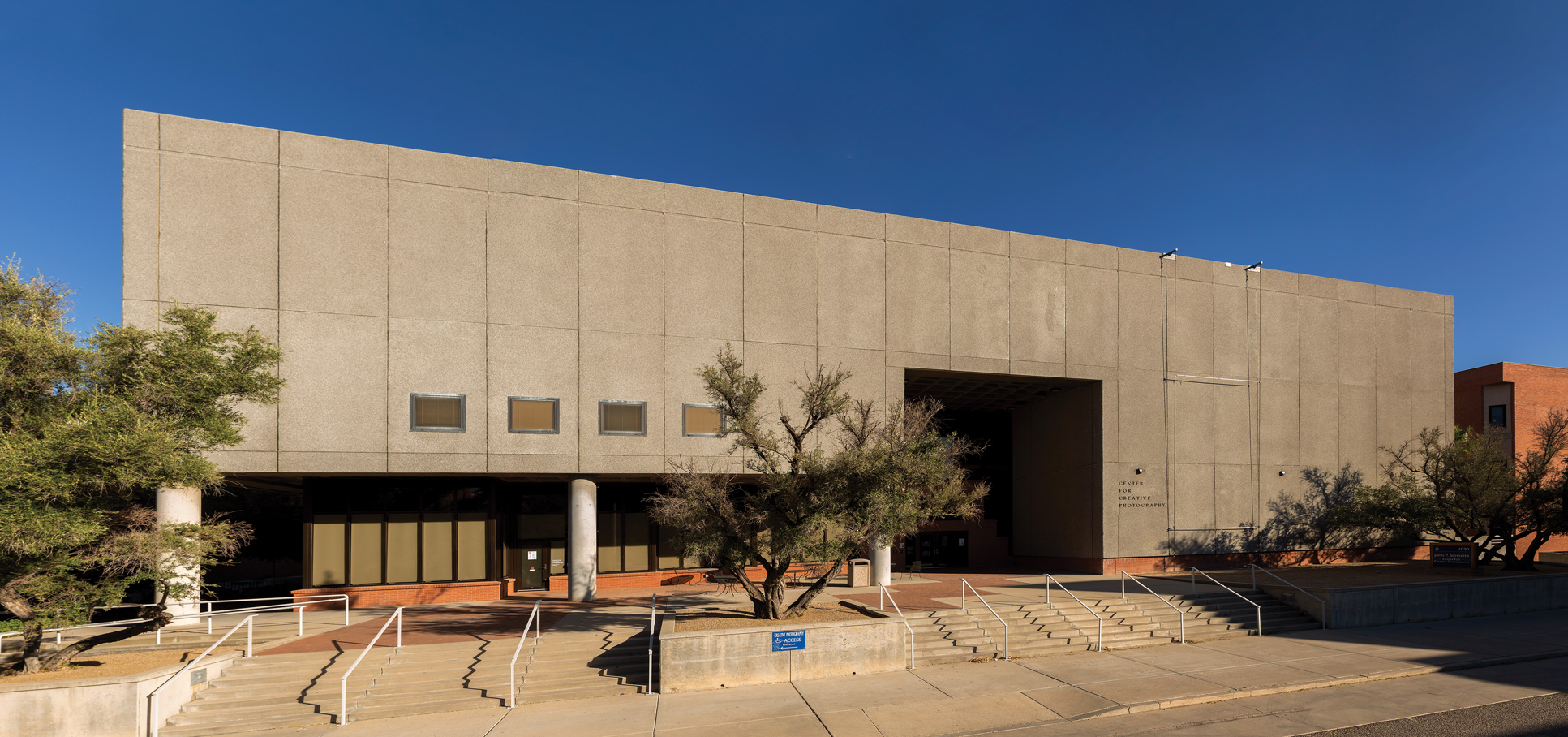About CCP
Overview
The Center for Creative Photography, University of Arizona, is recognized as one of the world's finest academic art museums and study centers for the history of photography. The Center opened in 1975, following a meeting between the University President John Schaefer and Ansel Adams. Beginning with the archives of five living master photographers—Ansel Adams, Wynn Bullock, Harry Callahan, Aaron Siskind, and Frederick Sommer—the collection has grown to include 270 archival collections. Among these are some of the most recognizable names in 20th century North American photography: W. Eugene Smith, Lola Álvarez Bravo, Edward Weston, and Garry Winogrand. Altogether there are over eight million archival objects in the Center's collection including negatives, work prints, contact sheets, albums, scrapbooks, correspondence, writings, audiovisual materials and memorabilia. In addition to whole archival collections the Center also actively acquires individual photographs by modern and contemporary photographers. There are currently more than 110,000 works by over 2,200 photographers. A library of books, journals, and exhibition and auction catalogs including many rare publications plus an extensive oral history collection complements the archival and fine print collections. The combined art, archival, and research collections at the Center provide an unparalleled resource for research, exhibitions, loans, and traveling exhibitions.
Land Acknowledgement
We respectfully acknowledge the University of Arizona is on the land and territories of Indigenous peoples. Today, Arizona is home to 22 federally recognized tribes, with Tucson being home to the O’odham and the Yaqui. The University strives to build sustainable relationships with sovereign Native Nations and Indigenous communities through education offerings, partnerships, and community service.
Mission & Vision
The Center for Creative Photography is the premier research collection of American photographic fine art and archives, promoting creative inquiry, dialogue, and appreciation of photography’s enduring cultural influence.
The Center for Creative Photography at the University of Arizona expands the history of photography to deepen an understanding of how the medium impacts society.
History
Excerpt from the John P. Schaefer article in Original Sources: Art and Archives at the Center For Creative Photography:
"The Center for Creative Photography is the product of the vision of one of the medium’s greatest masters, Ansel Adams, … and my conviction as university president that photography is a key element of the art and literature of our times. During the opening of a one-man exhibition of Ansel’s photographs at the University of Arizona’s Museum of Art, I ventured to ask him if he would be interested in placing the archives of his work at the University. Ansel, though somewhat surprised by the direct nature of my suggestion, responded by saying that he was not interested in having his work stand as an isolated collection. If, however, the University were willing to think in broader terms and include the works of many other photographers, he would be interested in exploring the possibilities. What followed was an invitation to visit him at his home in Carmel.
Conversations with Ansel in December 1974 were a revelation as he shared his own history in photography, in conservation, in writing and teaching with me. I, in turn, put forth ideas about what I believed the University was and could become, and why photography deserved the serious attention of students and scholars alike. We spoke of archives, teaching programs, seminars, visiting scholars, and collecting and preservation, publication, the creation of exhibitions; over the course of days the concept of the Center for Creative Photography was born… Harry Callahan, Wynn Bullock, Frederick Sommer, and Aaron Siskind joined with Ansel to found the first archives of the Center. W. Eugene Smith soon joined the University’s faculty. Paul Strand contributed much of his work, and the archive of Edward Weston was later added to the growing collections.
Within a year the Center became an international presence in the field of photography. It remains an active 'work in progress,' awaiting the next photograph, a key letter, significant memorabilia, a run of magazines, a rare book—all of which are vital to a living and growing archive.


